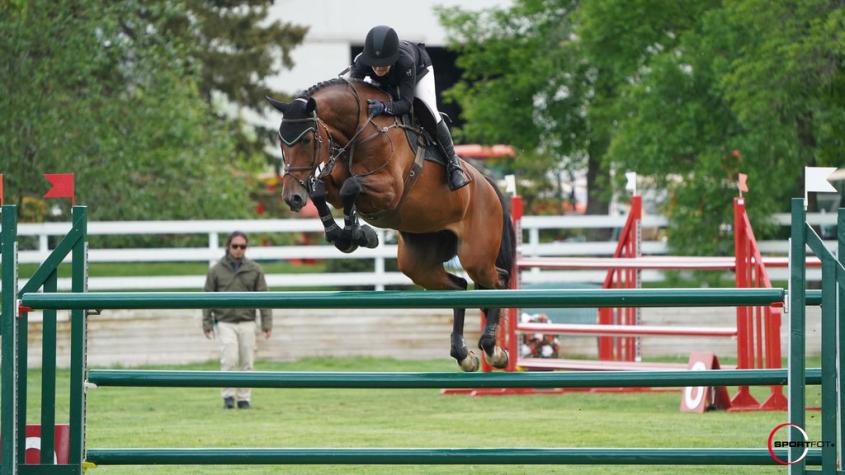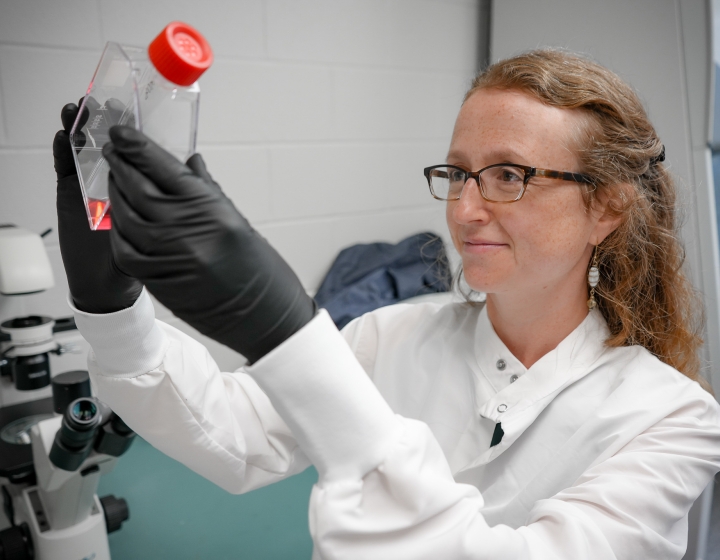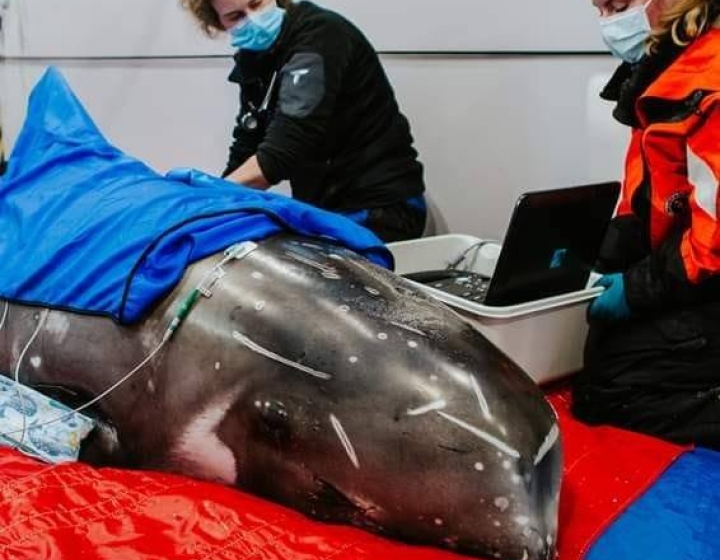Cornell helps horse with irregular heartbeat return to jumping
Rose, a nine-year-old warmblood mare, had just the right amount of energy and feistiness to become a successful show jumper when her owner, Claudia, bought her in January 2022. But nine months later at a series of classes in Tryon, North Carolina, Claudia noticed a change. While Rose had initially performed well, during the last class she began knocking fences down and when they left the ring, Rose developed a nosebleed.
“I wasn’t thinking it would be serious then,” Claudia says. “It was hot, there wasn’t a lot of humidity, and with the exercise it seemed like the perfect storm.”
And while three other horses developed nosebleeds that day, Dr. Sarah Allendorf, the veterinarian on site, noticed something additional in Rose: She had an irregular heart rhythm, otherwise known as an arrhythmia.
Claudia and her horses traveled home to Cazenovia, New York and a few weeks later, Rose’s heart still hadn’t improved. Claudia set her up for an evaluation at the Cornell Equine and Nemo Farm Animal Hospitals (ENFAH), where Dr. Katharyn Mitchell, assistant professor in the Section of Large Animal Medicine with a subspecialty in cardiology, reviewed Rose’s case and had suspicions of atrial fibrillation, or AFib. This is an irregular heartbeat that impacts high performing horses like Rose and, if left untreated, can have secondary consequences.
Because Rose’s heart hadn’t spontaneously returned to sinus rhythm (a normal, regular heartbeat), Mitchell, with Dr. Beth Williams Louie, a D.V.M. studying for her Ph.D. under Mitchell, and Dr. Hanna Sfraga, resident in large animal medicine, evaluated Rose to determine the cause of the AFib. “While AFib can be a secondary condition that’s caused by underlying heart disease, bigger horses like Rose are more at risk for arrhythmias simply due to their size and their naturally larger hearts,” Mitchell says.
Rose’s evaluation involved multiple components, including a heart ultrasound, known as an echocardiography, which provided a visual representation of Rose’s heart. Mitchell also conducted an exercise test at the walk, trot and canter with Rose, which involves the horse wearing a portable ECG device that transmits to a computer so the heart rate and rhythm can be monitored in real time. Although the evaluation ruled out underlying heart disease, Mitchell found that Rose had a higher-than-normal heart rate during exercise, making it dangerous for Rose to do so.
Medical treatments for AFib are available, but based on Rose’s risk factors and high heart rate, Mitchell and her team decided to perform a transvenous electrical cardioversion, or TVEC, which ‘shocks’ the heart back into a normal sinus rhythm. For the procedure, Mitchell and other members of the ENFAH Cardiology Service guided catheters to the heart while Rose was standing and lightly sedated. Starting from the right jugular vein, the specially designed long catheters pass into the right atrium, right ventricle and pulmonary artery. The correct placement was evaluated in real time using an ultrasound, and then once again with an x-ray taken by the Imaging Service. Then, the Anesthesia and Pain Medicine Service induced general anesthesia and monitored Rose’s health status so Mitchell and her team could watch the ECG and time the TVEC ‘shocks’ appropriately. The TVEC stops the abnormal rhythm, giving Rose’s heart a chance to resume a normal sinus rhythm. It took four shocks for Rose’s heart to do so, which Mitchell says is average for this procedure.
Rose recovered from the anesthesia and TVEC well. She rested for one month and a recheck at Cornell showed good results. Claudia started jumping Rose, working with her incrementally to ensure she wasn’t doing too much too quickly.
Now, six months after the procedure, Rose is back to jumping nearly as high as she was prior to the AFib diagnosis. Because she’s a bigger horse with a naturally larger heart, she has a risk of an AFib recurrence, but other factors are in her favor: Because of Allendorf’s quick diagnosis and Claudia’s rapid contact with Cornell, she wasn’t in AFib for very long prior to her procedure, and she hasn’t had any other known AFib instances.
Mitchell says she looks forward to following Claudia and Rose’s show jumping journey as it continues. She is also excited to bring TVECs back to Cornell, a procedure she has experience with from both her Cornell residency and Ph.D. training in Switzerland. She hopes that Cornell can perform it more regularly now that the expertise and equipment are on hand.
Thanks to the attentiveness of Claudia and the collaboration of ENFAH’s Cardiology, Imaging, Large Animal Medicine and Pain Medicine and Anesthesia Services, Rose’s case was a success.
“It was so lucky for us that Cornell was so close,” Claudia says. “It was just very nice to have that group of doctors, and I’m very grateful for all of them.”
Written by Jamie Crow





